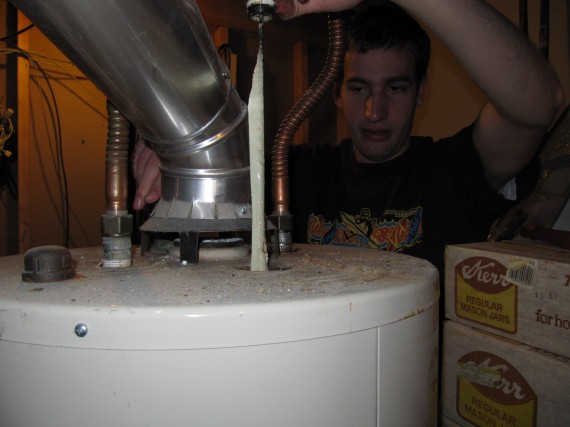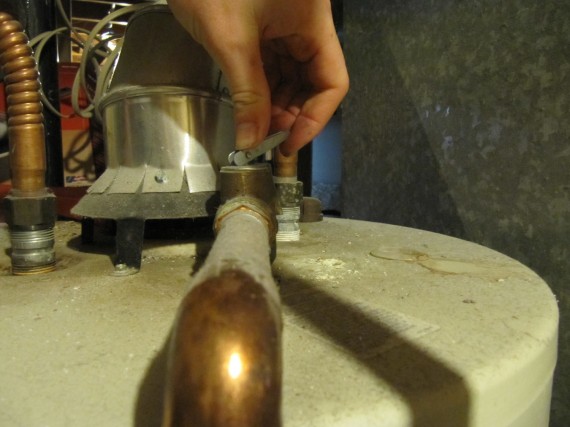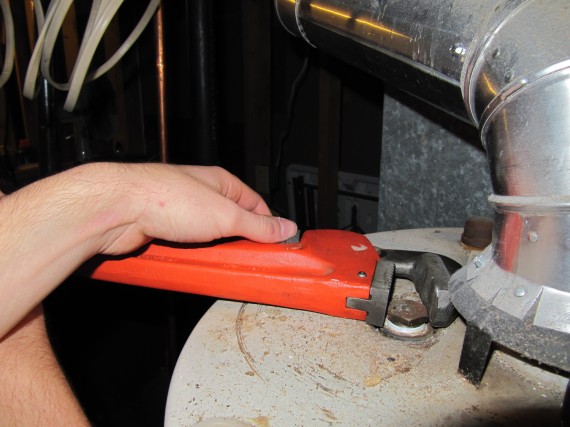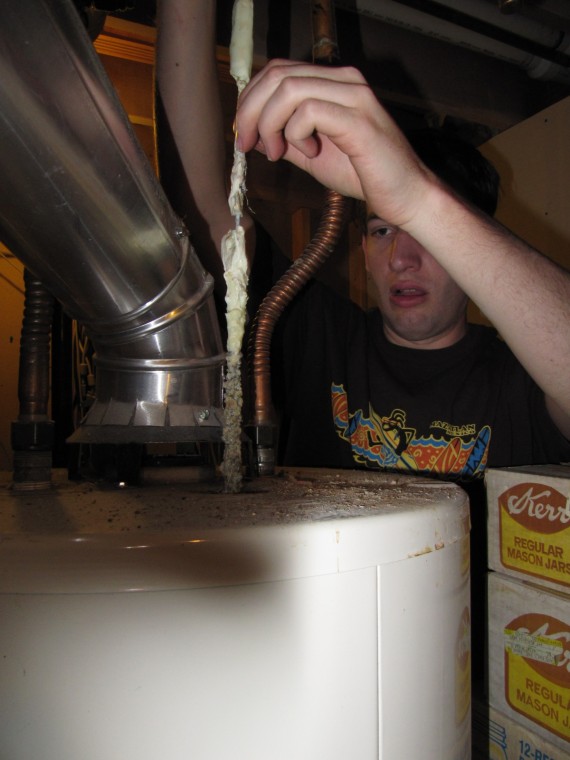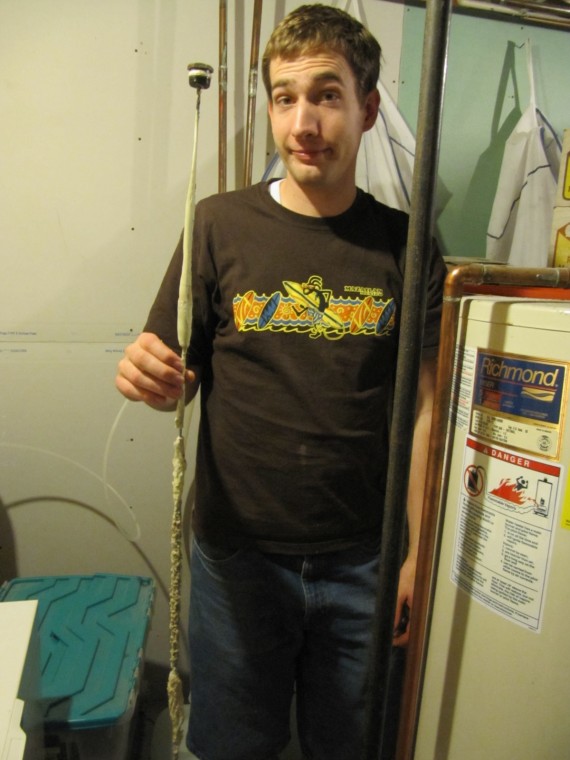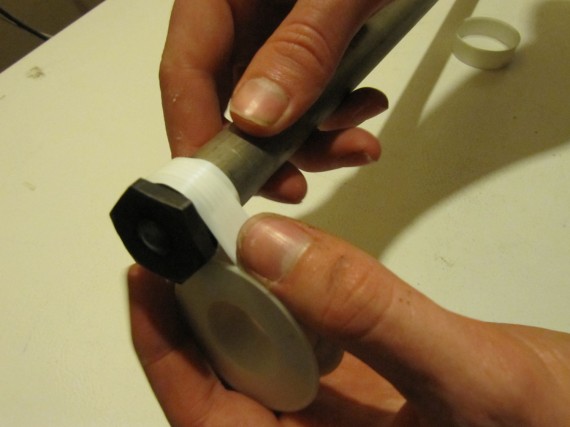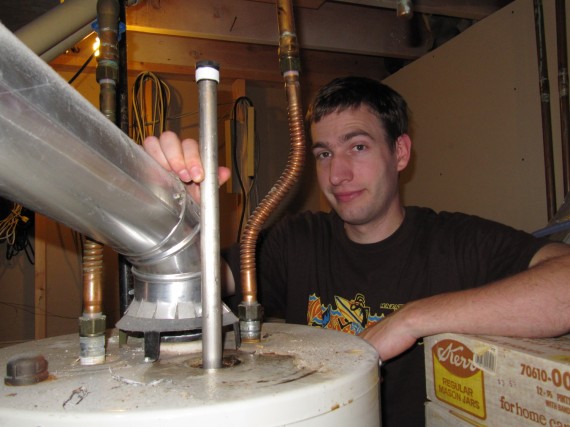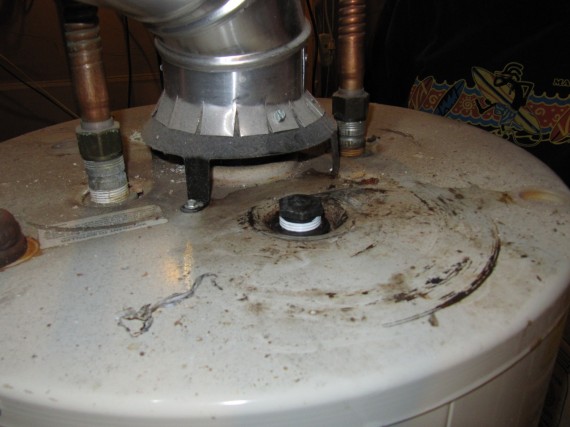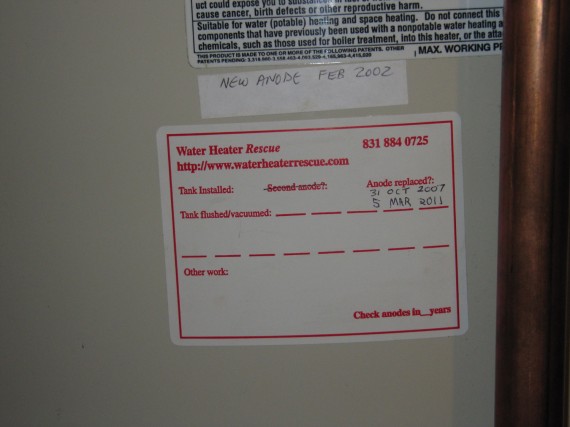It is time, yet again, to replace my water heater’s sacrificial anode. My purpose here is to bring to your awareness the importance of changing the anode to substantially prolong the life of your water heater. This is not a “how to” and if you are unsure of your skills you should call a professional.
Rust Protection
For decades, the sacrificial anode has been a key part of the rust protection of a tank. The anode is a rod made of magnesium or aluminum that’s formed around a steel core wire and is screwed into the top of the tank. When the tank is filled with water, an electrolytic process begins whereby the sacrificial anode is consumed to protect a small amount of the tank’s exposed steel. Anodes corrode more quickly in softened water.
When the anode is removed, if you can see six inches of the steel core wire, replace the rod. If all you have is the steel core wire, or less, then the tank may be about to fail, or it could last several more years. There are two kinds of anodes, combo and hex-head. The hex-head has its own port that you can see in my photographs, the combo is found in the hot water port.
I always replace my anodes with magnesium rather than aluminum. Aluminum produces less driving current between anode and cathode (the tank is the cathode). It produces many times its original volume in corrosion byproduct which adds to sediment and can also clog filters. Aluminum rods expand as they corrode making them hard to remove. And lastly some of that aluminum can get into the cold water and do nasty things to your liver, brain, and kidneys.
For more information, see The Basics: Anodes and Longevity. These are the people I buy my anodes from if I cannot obtain them locally.
Preparation
I read about sacrificial anodes just before my first water heater rusted through and had to be replaced. I removed the anode from the old tank and found all that was left of the rod was the steel core. By changing the sacrificial anode at least every five years, the new tank has now outlasted the old tank.
To make replacing the anode a little easier, when I bought my new tank I made sure it came with an hex-head anode. Before obtaining a replacement anode, I measured the distance from the top of the tank to the ceiling. That will be the maximum length of anode you can install. In my case I had 48 inches of clearance — just right.
Removal
Paul replaced the old anode with Megan photographing the steps.
Paul turned off the water to the house and then opened the temperature relief valve on the tank. He didn’t turn off the natural gas supply to the water heater, although in the past I have done so when I have changed the anode.
A large adjustable wrench was used to loosen the hex-head anode. It came out easily though sometimes they really do need a hefty wrench.
The old anode was removed. We had enough room between the top of the tank and the ceiling to remove the anode. However, if there was not sufficient space, the used rod will easily bend.
On inspection, you can see that the anode does indeed need replacing. Four years ago this was a .84 inch thick 4 foot long solid magnesium hex-head anode.
Installation
Installing the new sacrificial anode is simple enough.
The new rod came with a roll of tape that is wound around the anode to make removal easier. The tape does not seem to hinder the essential electrolytic process that consumes the rod and thus protecting your tank.
Clean Up
Paul closed the temperature relief valve and turned the water back on.
It is very important to record the installation date. My previous kit came with a sticker to place on my tank. The first replacement was done five years after installation of the water heater, in February of 2002. The next replacement was 31 Oct 2007 and the latest was done less than five years later 5 March 2011. I also made an entry in Google Calendar which I set up to email me in four years to remind me to change the anode.
Notice that the sticker has a “Tank flushed/vacuumed” reminder. Flushing your tank will also prolong its life. I have flushed my tank once and it is overdue for another flush. However, that is a post for another day.
One final reminder. By replacing the anode you can substantially increase the life of your water heater. Spending $45 every five years will defer for some time the price of a new heater (around $500), plus the cost of installation if you pay someone to do it. Not to mention the inconvenience of suddenly being without hot water or cleaning up a leaking tank.
Out of curiosity, how many readers already knew about replacing the anode?
Videos
.
.

